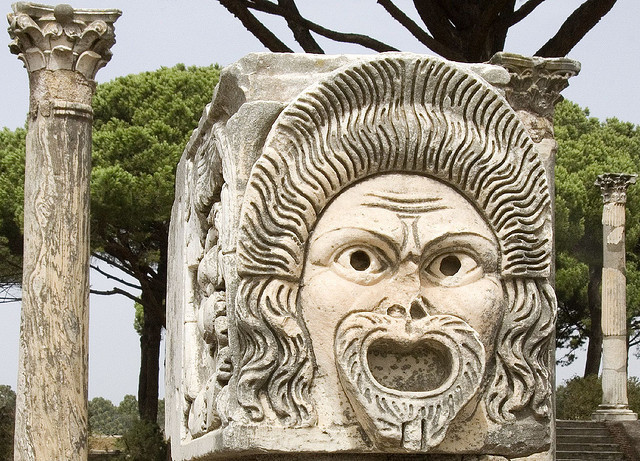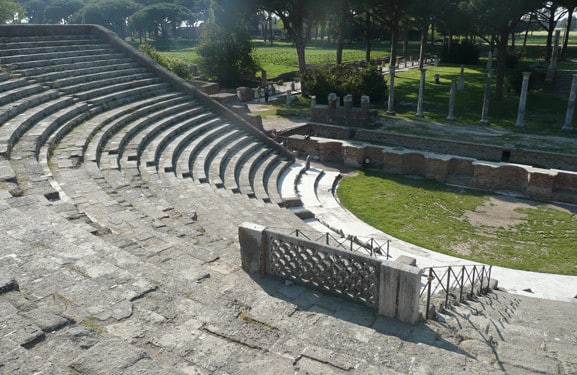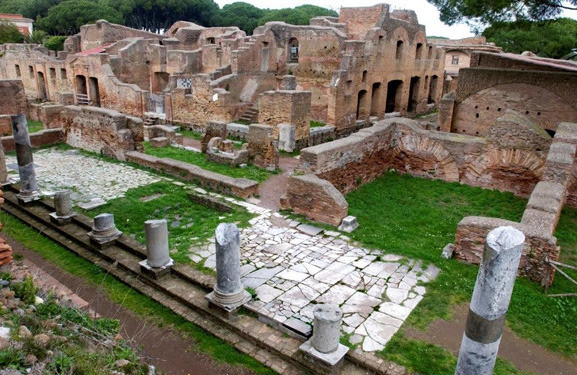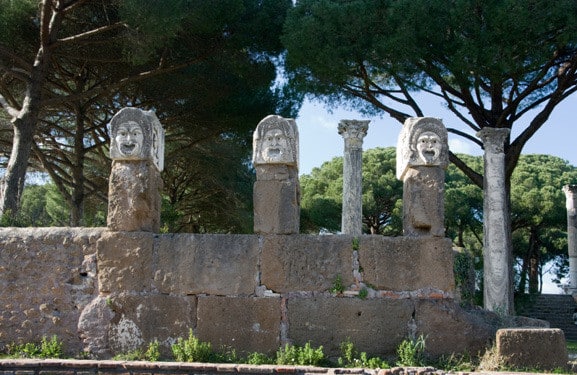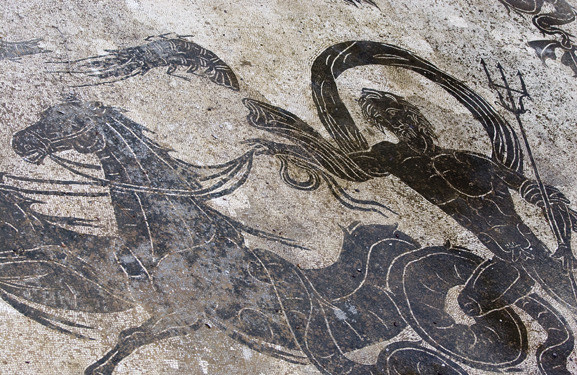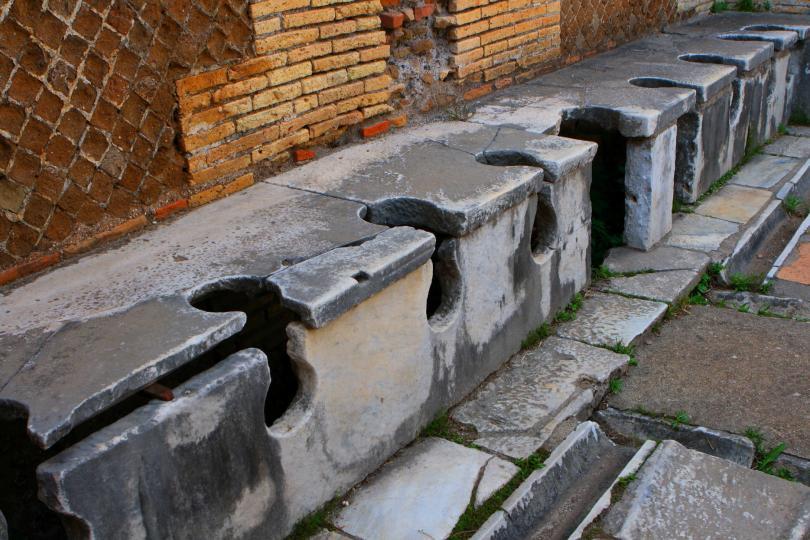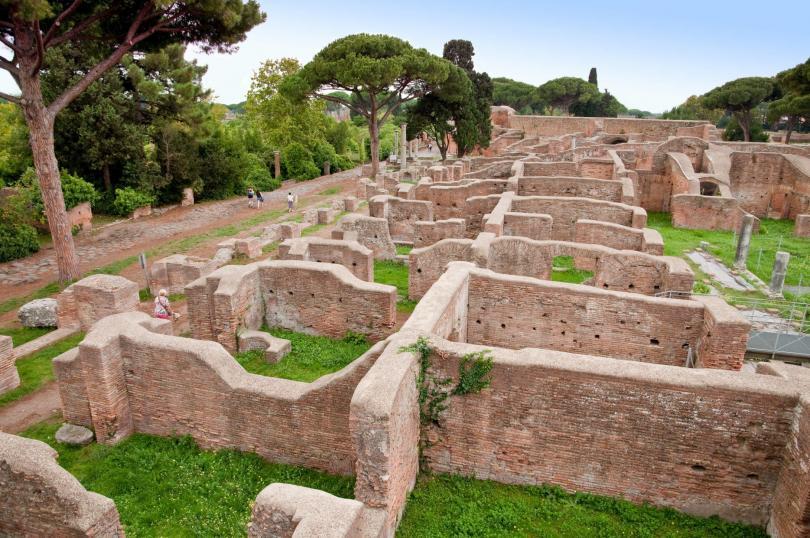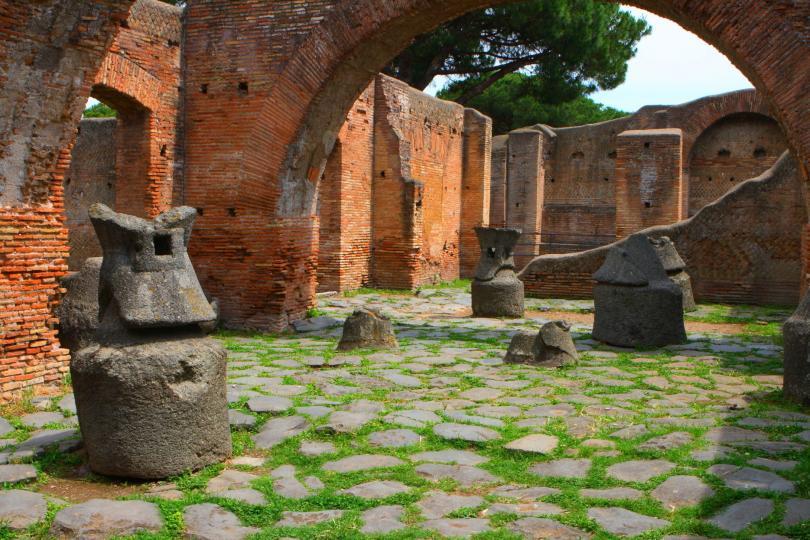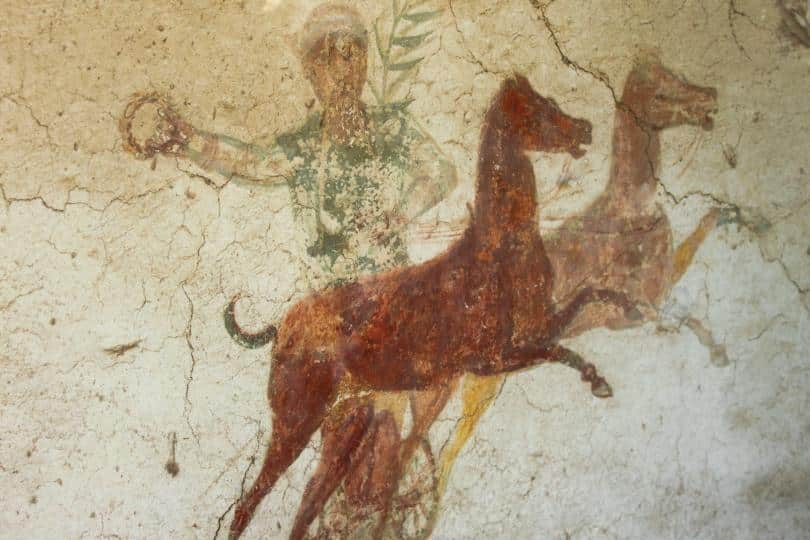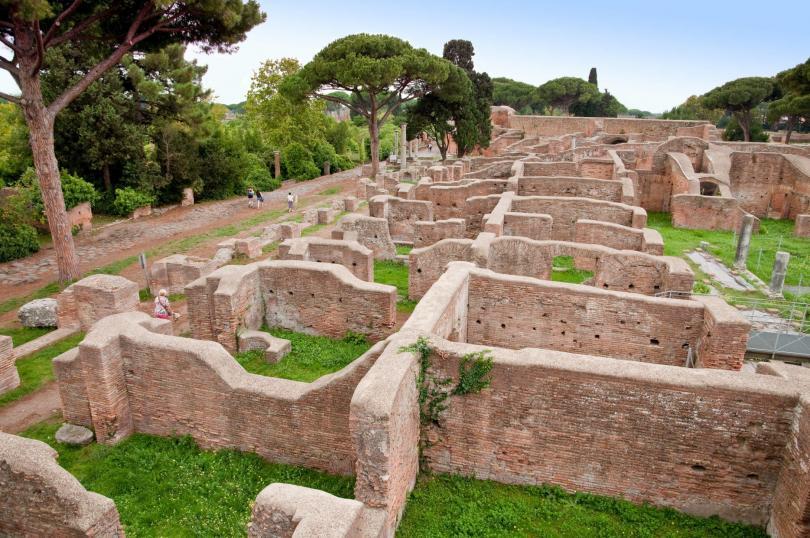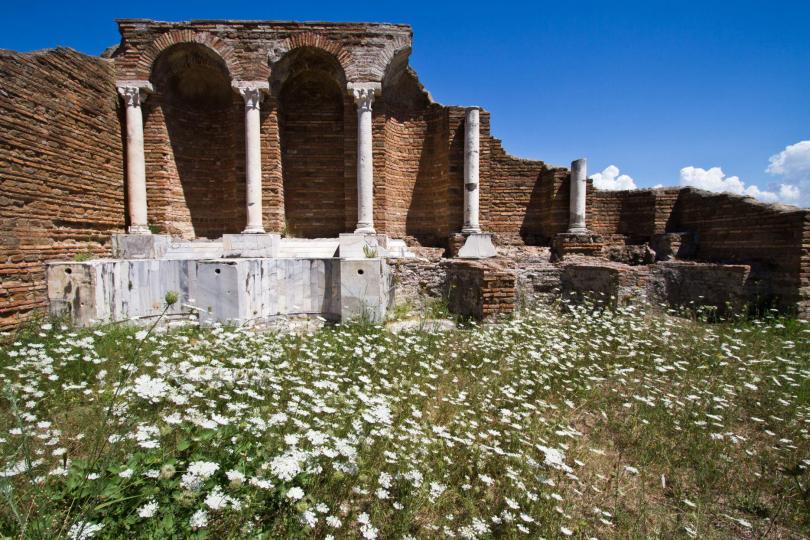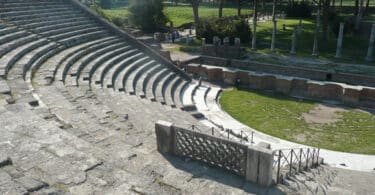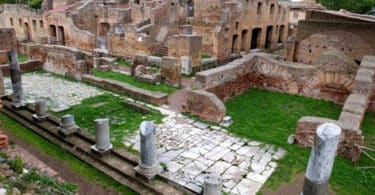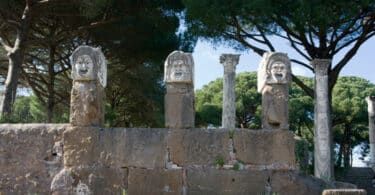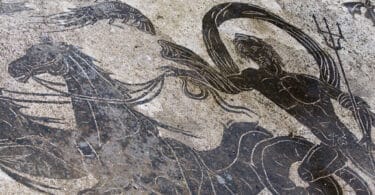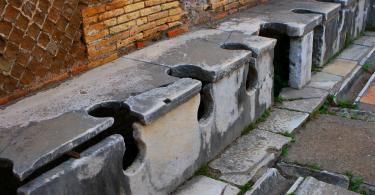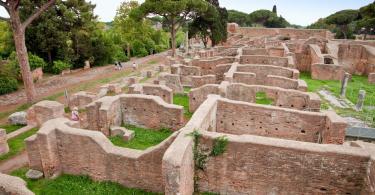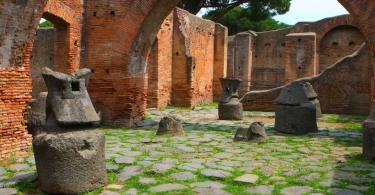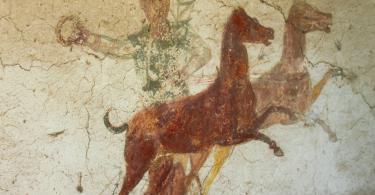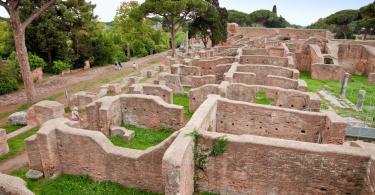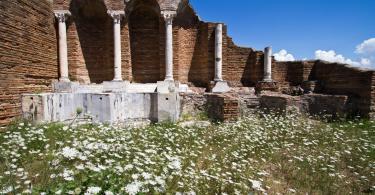470 Reviews
from €49.00 EUR
Duration: 4 Hours
Organized by: City Wonders
Immerse yourself in the captivating story of Ostia Antica, a remarkably well-preserved archaeological site founded in the 4th century BC. Once home to over 100,000 Roman citizens, this ancient harbor city provides an unparalleled glimpse into the daily lives, societal structures, and architectural innovations of the Roman Empire. A half-day excursion from Rome to Ostia Antica offers not only an enriching historical experience but also a chance to enjoy the modern coastal town of Ostia afterward.
Why Visit Ostia Antica?
Ostia Antica served as the principal seaport of ancient Rome, connecting the capital to its vast network of trade routes. Over the centuries, floods and sediment from the Tiber River buried large sections of the city, sealing it beneath layers of mud and debris. This natural preservation process kept many of its buildings, mosaics, and artifacts remarkably intact. Today, it stands as a treasure trove for history enthusiasts eager to explore an authentic Roman urban landscape without the crowds often found at more famous sites.
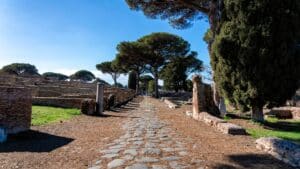
Ostia Antica, Rome, Italy
The Journey Begins: Train Ride from Rome to Ostia Antica Your adventure starts in Rome, where you’ll take a short, comfortable train ride to Ostia Antica. Accompanied by an expert local guide, you’ll be treated to engaging anecdotes about the city’s origins, significance to Rome’s maritime trade, and eventual decline. As you travel, you’ll gain valuable context that sets the stage for the remarkable ruins you’re about to explore.
Exploring Ostia Antica: Top Attractions and Historical Insights
- Strolling the Decumanus Maximus: Begin your exploration along the Decumanus Maximus, the city’s main thoroughfare. This broad, stone-paved street once thrived with shops, markets, and busy pedestrians. Walking these ancient pathways with your guide’s vivid commentary transforms the stones into a living museum. Admire the preserved Roman statues standing sentinel and envision the bustling trade that once fueled Ostia’s prosperity.
- The Baths of Neptune: Venture next to the Baths of Neptune, one of the best examples of Roman public bath culture. Here, you’ll find a stunning black-and-white mosaic depicting the sea god, Neptune, being drawn by a four-horse chariot. Discover how Romans placed immense value on communal bathing facilities, using them not only for hygiene but also for socializing, conducting business, and networking.
- The Amphitheater: No visit to a Roman city is complete without stepping inside its amphitheater. Built in 12 BC to seat up to 3,500 spectators, Ostia Antica’s amphitheater hosted dramas, comedies, and even political events. As you climb the ancient steps and imagine the roar of the crowd, your guide will detail the architectural wonders that made these grand spectacles possible, shedding light on how Roman engineering stood centuries ahead of its time.
- The Forica (Public Washrooms): For a memorable glimpse into everyday Roman life, make a stop at the communal Forica, or public washrooms. A single marble bench with multiple holes running along its perimeter once served as a social hub—yes, even in ancient Rome, daily life was communal! Taking a seat here offers a moment of lighthearted authenticity, reminding us of the city’s human stories beyond the marble monuments.
- Beyond the Ruins: Hidden Corners Though the main attractions shine brightly, don’t overlook Ostia’s hidden corners. Many backstreets still reveal exquisite mosaics, ancient apartment blocks (insulae), and intriguing artifacts that reflect the vibrant culture of this once-bustling port. Pausing at lesser-known spots allows you to fully appreciate the layers of Roman history waiting to be uncovered.
- Ending Your Tour: Return to Rome or Explore Modern Ostia At the end of your guided journey, you can opt to keep exploring Ostia Antica’s atmospheric ruins or head into the modern city of Ostia for a leisurely lunch at one of the local trattorias. If sunshine and sea air are calling, continue on to the nearby beach for a relaxing afternoon. Alternatively, you can follow your guide back to Rome by train, concluding your half-day adventure with fresh insights into the grandeur of ancient Roman life.
By embarking on this captivating half-day tour from Rome to Ostia Antica, you’ll unlock the doors to a world where ancient Roman citizens once thrived. The city’s remarkably preserved streets, towering ruins, and intricate mosaics vividly illustrate the empire’s grandeur, innovations, and social customs. Whether you decide to relax in modern Ostia afterward or make your way back to Rome, your trip through Ostia Antica will remain a highlight of your Italian adventure.
- Don’t miss the train journey to the historical harbor town of Rome,
- Stroll around on the streets where once ancient Romans walked,
- Try public toilets communal toilets!
- You choose: Go to the beach or enjoy & explore Ostia more.
- Free cancellation: Cancel up to 24 hours in advance for a full refund.
- Reserve now & pay later: Keep your travel plans flexible — book your spot and pay nothing today.
If we believe Virgil, it was on this, the left bank of the Tiber estuary (ostium) that Aeneas, the Father of the Latin race, landed after fleeing from Troy.
What was an area of marshland was doubtless very soon colonised for its salt and as early as the fourth century BC it had become Rome’s official port. After serving as a military arsenal during the wars against Carthage, Ostia rapidly became the jumping-off point for Roman expansion in the Mediterranean.
Its golden age was the early empire, when it was a flourishing centre of international commerce and home to some 50,000 inhabitants. Into its wharves and warehouses flowed provisions from all over the Roman world, the most vital being the grain which fed the capital. But already Ostia’s storage capacity was proving unequal to the demand.
In addition, shipping using the Tiber mouth had to contend with shoals and sudden squalls. The emperors Claudius (41—54) and Hadrian (117-138) created artificial harbours further to the north that enjoyed the advantage of being linked directly to the sea. This marked the beginning of Ostia’s decline, a process hastened by the silting up of the port and the gradual retreat of the sea. In the fifth century, the town was abandoned by the last survivors of malaria epidemics.
from €7.00 EUR
Seller: Tiqets
5.803 Reviews
from €89.00 EUR
Duration: 50 Minutes-1 Hour
Organized by: Airport Shuttle Italy
2.152 Reviews
from €45.00 EUR
Duration: 45 Min.
Organized by: Welcome Italy
3.185 Reviews
from €15.00 EUR
Seller: Tiqets
from €20.00 EUR
Seller: Tiqets
from €6.00 EUR
Duration: 90 Min.
Seller: Tiqets
from €33.00 EUR
Seller: Rome Pass
from €85.00 EUR
Duration: 4 Hours
Organized by: Enjoy Rome
946 Reviews
from €99.00 EUR
Duration: 4 Hours
Seller: Eating Europe
7.461 Reviews


